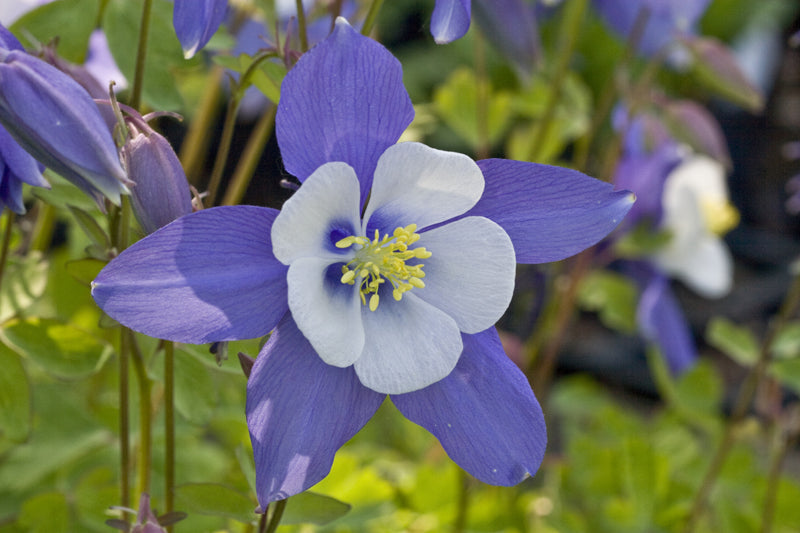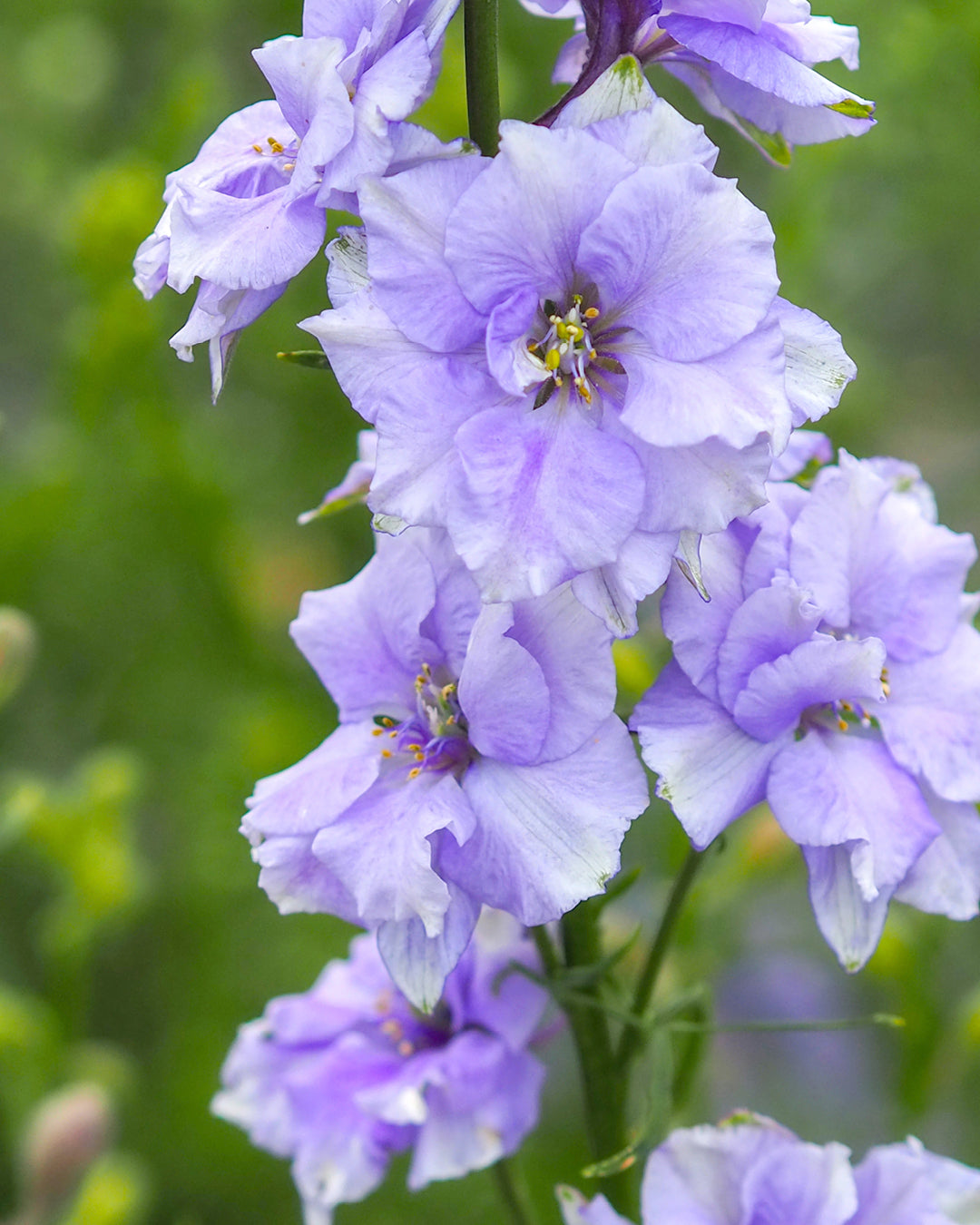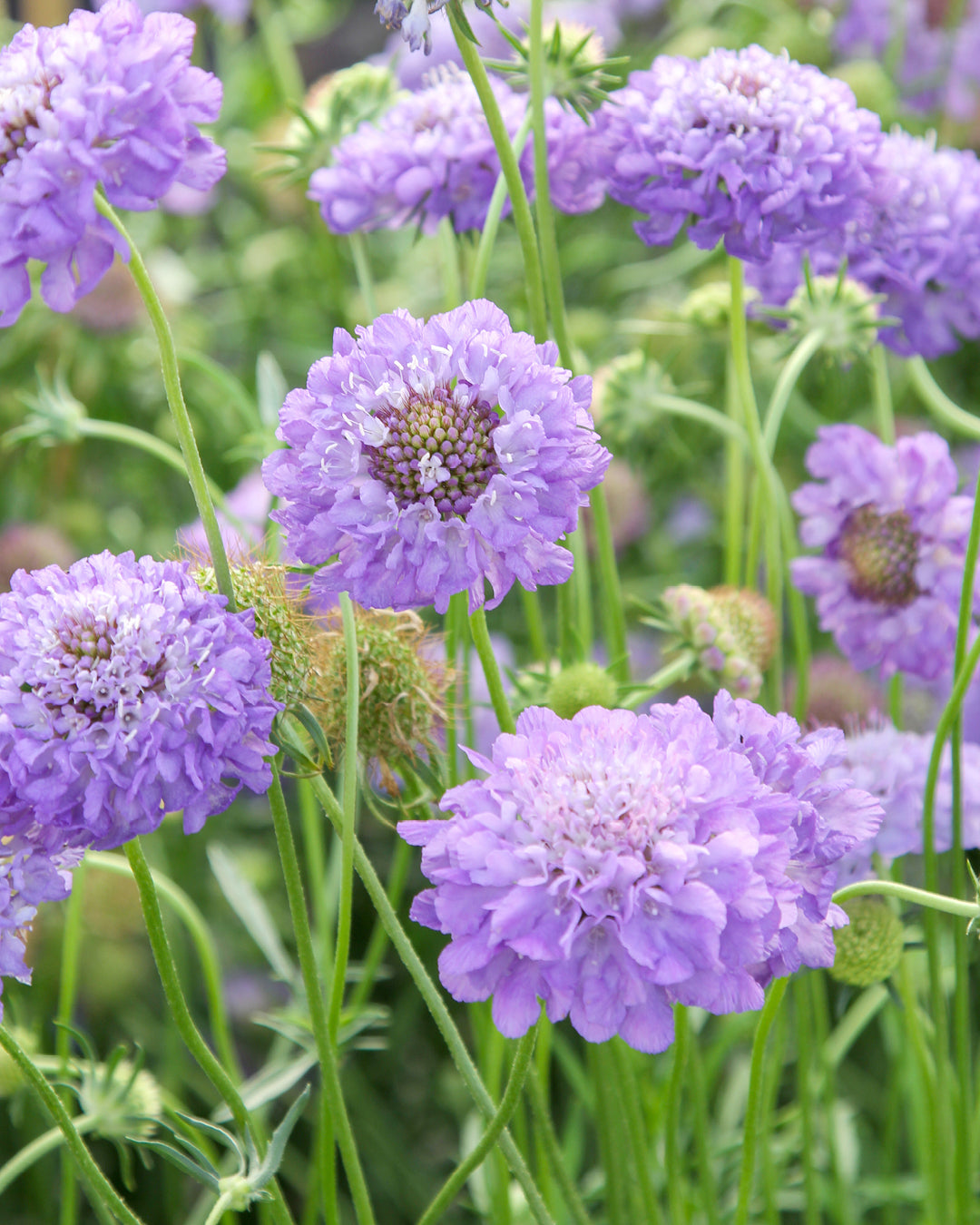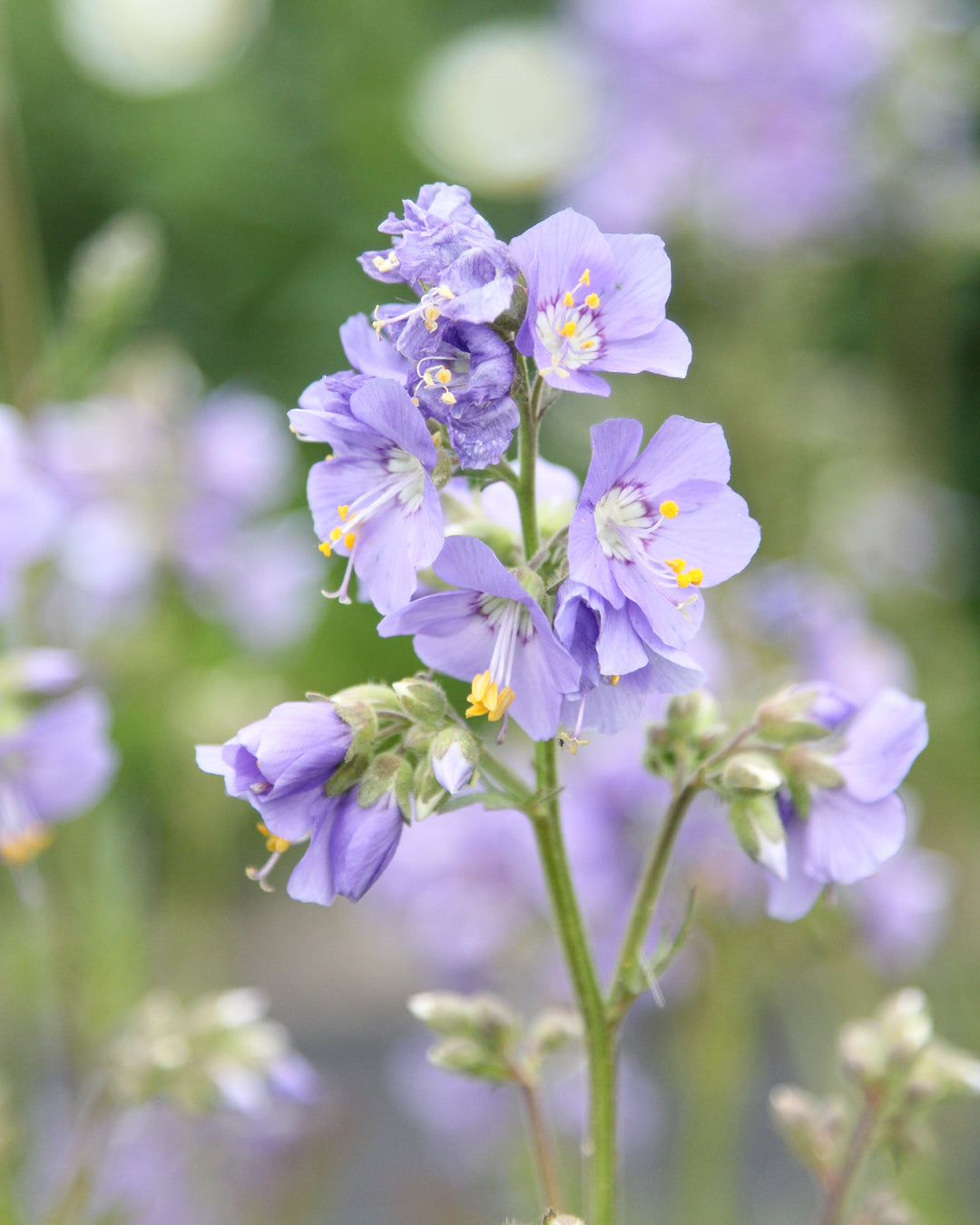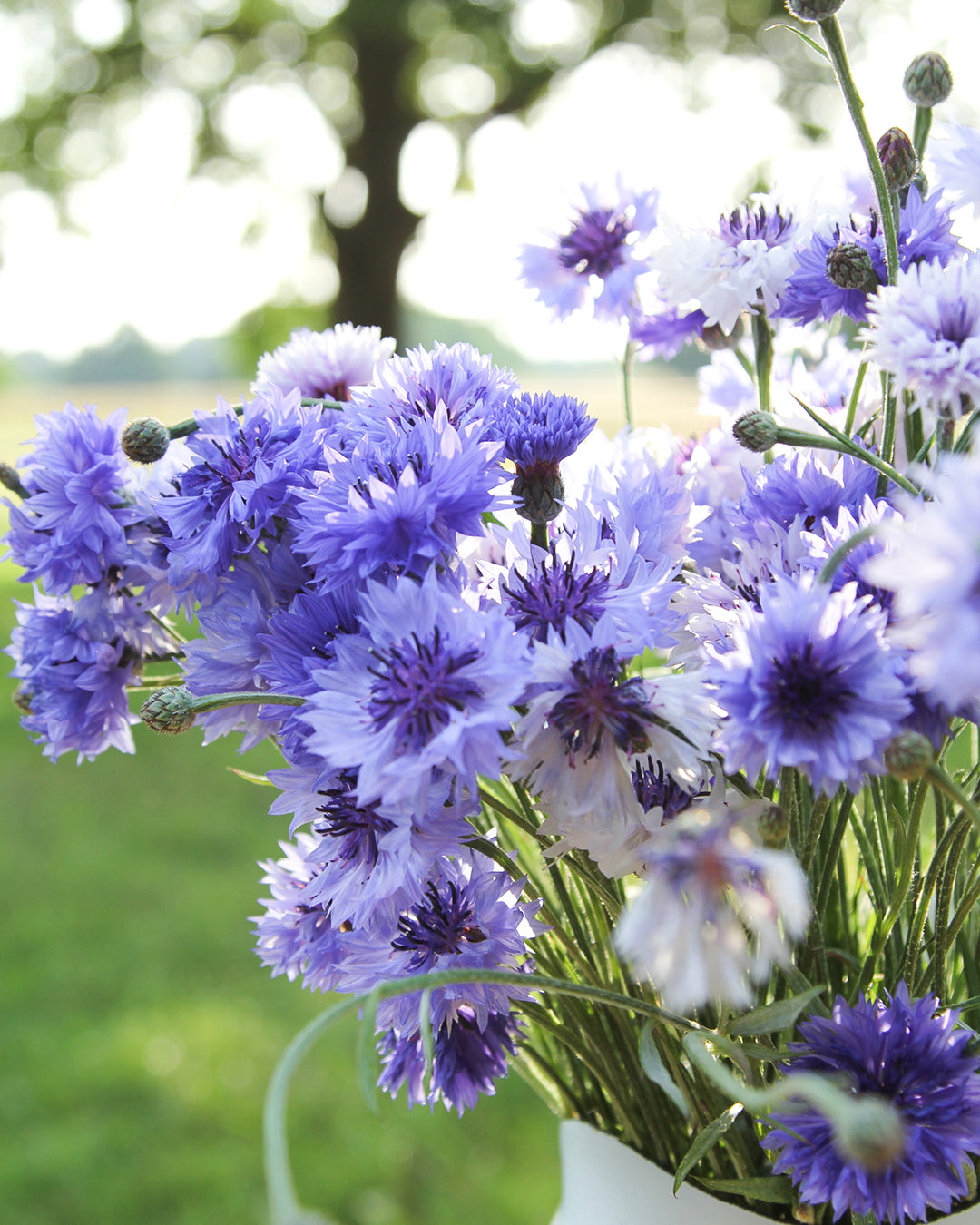Flower combinations in white and blue
Whether as a sea breeze or as the epitome of white and blue coziness, white and blue simply go together perfectly and look equally good in romantic and modern gardens.
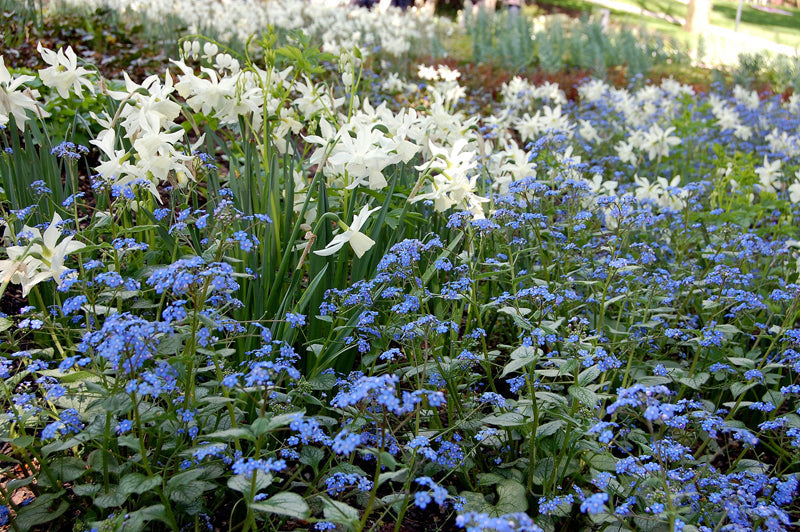
Maritime refreshment
Waves of white and light blue woodland phlox (Phlox divaricata, e.g., 'White Perfume' and 'Clouds of Perfume') crash against the border of the flowerbed, white foam crowns of baby's breath (Gypsophila) dance between waves of ocean-blue steppe sage (Salvia nemorosa, e.g., 'Blauhügel'), while here and there islands of fountain grass (Pennisetum) bring calm to the turbulent sea of blossoms. "White and blue flower combinations are popular with many gardeners, especially in the summer when it's really hot. Then the sight of the cool colors can have a very refreshing effect," says Arno Panitz of the StaudenPanitz nursery in Rottenburg, Bavaria.
Delphiniums: Blue bloods of rank and name
One might think that, as a true Bavarian, the plant expert's first thought of white and blue would be the colors of the Bavarian flag, gentian and edelweiss, or Oktoberfest decorations. But of course, it's the other way around: "In Bavaria, people tend to think of the sea – but I ship heaps of gentian to northern Germany," explains Panitz with a mischievous smile. Personally, he believes that stemless gentian and edelweiss are best suited to the mountains, otherwise only in rockeries, pots, or as attractive miniature plants for grave decorations. But there are a whole host of other beautiful perennials that could be considered. "You can, of course, find the entire palette of blue tones, as well as some white varieties, in delphiniums. The 'Jubelruf' variety is, for me, the epitome of blue and goes perfectly with white bellflowers (Campanula lactiflora, e.g., 'Alba'). These two species also complement each other very well with their different flower shapes."
Flower shapes: Bring variety to color combinations
Further examples of harmonious arrangements are the light blue flowers of the bluebell bush (Amsonia tabernaemontana) in association with the graceful flowers of the meadowsweet (Filipendula ulmaria, e.g. 'Plena') or the stiffly upright flower spikes of the Virginia speedwell (Veronicastrum virginicum, e.g. 'Diana') together with the rounded flowers of the Caucasian scabious (Scabiosa caucasica, e.g. 'Clive Greaves'). "I also love spring duos like blue Siberian iris (Iris sibirica) with the white variety of bleeding heart (Dicentra spectabilis 'Alba'). In partial shade, I love the combination of Caucasian forget-me-not (Brunnera) and the elegant Solomon's seal (Polygonatum), but the little-known maple leaf (Aceriphyllum rossi) would also go well with it," notes Arno Panitz. As an all-rounder, the master perennial gardener recommends cranesbill (Geranium), of which a specimen in white, blue, or violet can be found for almost any location. "Blue and white, by the way, go quite well with almost all colors, with the possible exception of bright red. This makes it easy to transition to warmer colors in the fall, for example, by placing blue autumn monkshood (Aconitum) alongside coneflowers (Rudbeckia) in warm yellow, red, and bronze tones."
Invitation to Oktoberfest
When garden enthusiasts invite guests to the Oktoberfest, white and blue blossoms are just as much a part of the festive atmosphere as pretzels and chicken. Some are even edible, such as the pretty pure blue blossoms of the common sage (Borrago officinalis), which can be used to decorate salads and drinks. "Individual blossoms of the sage (Salvia officinalis) are also suitable as scattered decorations for the table. This way, you can decorate relatively large areas without sacrificing a large number of flower heads," says Arno Panitz. And if you give gentian and edelweiss the right location in the garden, you can cut a few flowers for your vase every year for such occasions. "Edelweiss needs lean, well-drained soil and full sun," explains the perennial expert. "For gentian, I recommend the native swallow-wort gentian (Gentiana asclepiadea). It blooms just in time for the start of Oktoberfest in September." The Swallowtail Gentian prefers fresh, humus-rich, yet permeable soil and thrives in both sun and partial shade. The 50 cm tall species likes to lean against sturdy perennials or taller roses and shrubs.
TEXT: The Green Media House

